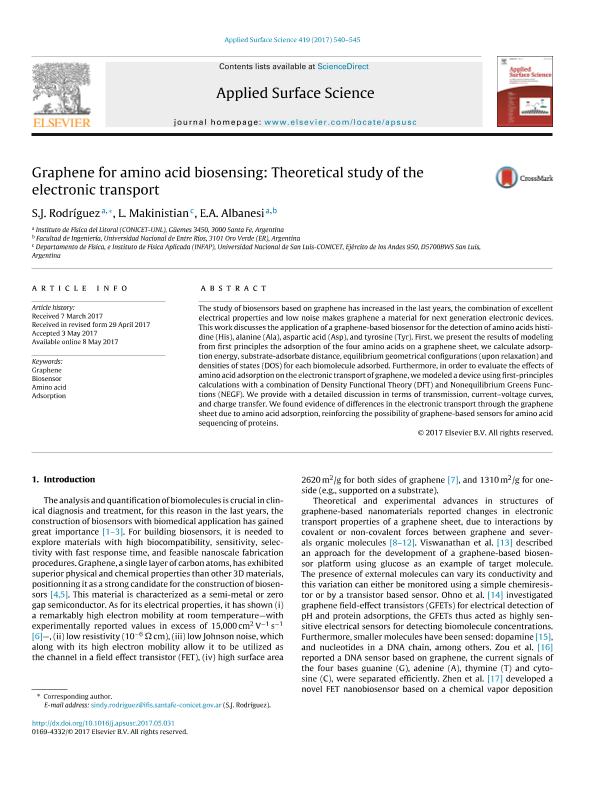Artículo
Graphene for amino acid biosensing: theoretical study of the electronic transport
Fecha de publicación:
10/2017
Editorial:
Elsevier
Revista:
Applied Surface Science
ISSN:
0169-4332
Idioma:
Inglés
Tipo de recurso:
Artículo publicado
Clasificación temática:
Resumen
The study of biosensors based on graphene has increased in the last years, the combination of excellent electrical properties and low noise makes graphene a material for next generation electronic devices. This work discusses the application of a graphene-based biosensor for the detection of amino acids histidine (His), alanine (Ala), aspartic acid (Asp), and tyrosine (Tyr). First, we present the results of modeling from first principles the adsorption of the four amino acids on a graphene sheet, we calculate adsorption energy, substrate-adsorbate distance, equilibrium geometrical configurations (upon relaxation) and densities of states (DOS) for each biomolecule adsorbed. Furthermore, in order to evaluate the effects of amino acid adsorption on the electronic transport of graphene, we modeled a device using first-principles calculations with a combination of Density Functional Theory (DFT) and Nonequilibrium Greens Functions (NEGF). We provide with a detailed discussion in terms of transmission, current–voltage curves, and charge transfer. We found evidence of differences in the electronic transport through the graphene sheet due to amino acid adsorption, reinforcing the possibility of graphene-based sensors for amino acid sequencing of proteins.
Palabras clave:
Adsorption
,
Amino Acid
,
Biosensor
,
Graphene
Archivos asociados
Licencia
Identificadores
Colecciones
Articulos(IFIS - LITORAL)
Articulos de INST.DE FISICA DEL LITORAL
Articulos de INST.DE FISICA DEL LITORAL
Citación
Rodríguez Fanelli, Lucía; Makinistian, Leonardo; Albanesi, Eduardo Aldo; Graphene for amino acid biosensing: theoretical study of the electronic transport; Elsevier; Applied Surface Science; 419; 10-2017; 540-545
Compartir
Altmétricas




